Siegel & Stockman
Siegel & Stockman makes mannequins for advertising clothing and dress forms for draping fabric. Some of their mannequins had crazy designs and finishes. Others were made into special poses, like yoga poses for modeling activewear. The dress forms were made into all different sizes (women’s, men’s, children’s, with body type variations) and they also sold a special French haute-couture dress form.
Decorative mannequins: (plus some purposely distressed dress forms)
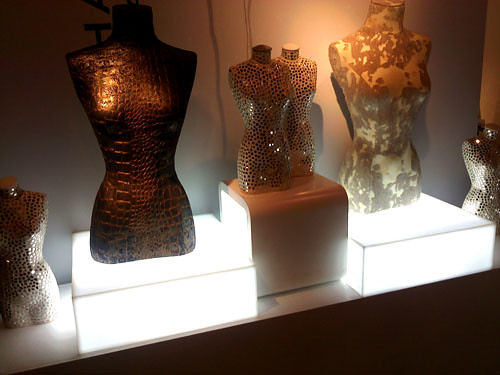
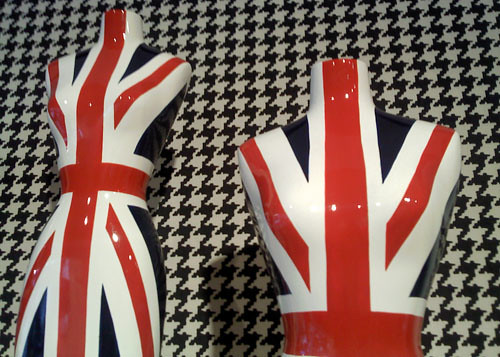
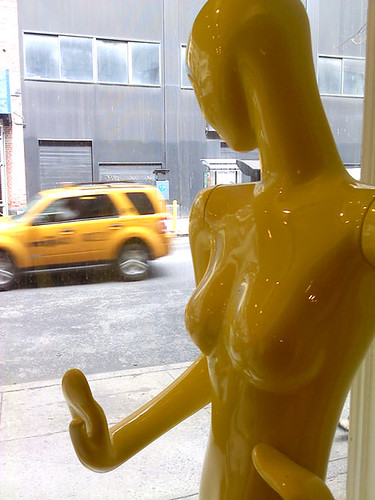

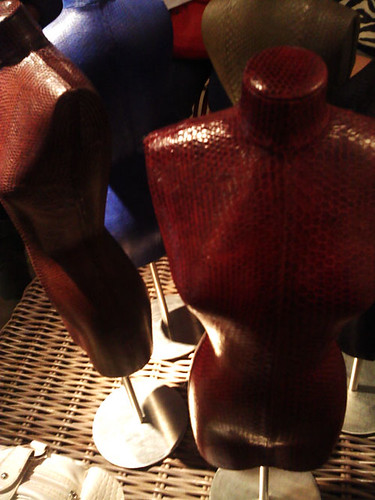
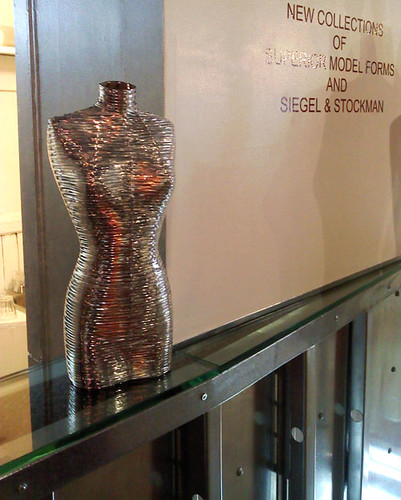
Dress forms:
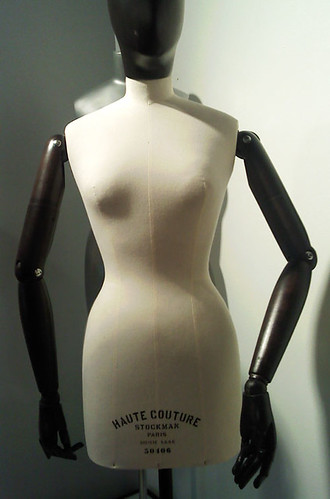

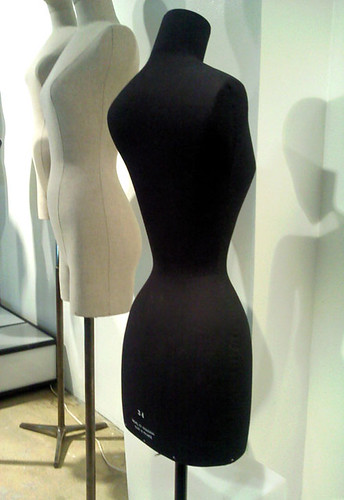
In Style USA
InStyle is a full service sewing contractor that works with big designers and also helps small designers produce their first collections. When you are first getting into the business, it is difficult to find good sources for materials and production. Factories and fabric mills tend to avoid new designers because of their lack of experience and their misunderstanding about the way that the garment industry works. You can’t just go on the internet to find wholesale fabric and sewing factory contacts, because a lot of these companies don’t have websites, and wouldn’t even want you as a customer in the first place. (I tried to look up InStyle on Google. They had an address listing, but nothing else. In fact, Google’s information shows that they are a clothing store, and it gives the web address for the magazine InStyle. Whoops!)
InStyle gave us brochures and price lists for their services. In their estimate, starting a 10-piece collection would require about ten thousand dollars. Think that’s a lot? Producing a good line is complicated. Here’s a list of all the services that InStyle offers: design consultation, pattern making, first samples, duplicates, grading and marking, production and sample cutting, manufacturing, and resourcing fabric and trims. Quote from the woman who gave us the tour: “The average consumer doesn’t realize how much work goes into a garment.”
On our tour we learned some specific details about the pattern making and sample making process. Designers use fit models to test their new patterns. The fit model needs to be the average of the size demographic that they are making clothes for. Fit models are important and they can be contractually obligated to keep the same measurements. If they gain or lose any weight, they will be of no use to the designer anymore.
Other interesting facts: designers that have an established relationship with InStyle will use them for patternmaking. Instead of making patterns from scratch, like you are taught in a fashion school pattern making class, the designer will have a set of perfected pattern blocks that the pattern maker will alter into new styles. It’s much more efficient to make a jacket pattern from a basic jacket block then from the basic bodice “sloper” you make in school. Each designer has their own set of blocks that are based on the average size of their customer.
InStyle produces clothing in their New York factory and in a China factory. They give their workers more benefits than other factories, so their prices are higher. According to the brochure, domestic production has no minimums, but if you want your order produced in China you will have to order at least 400 pieces.
From the price list: an average jacket pattern will cost you $350-$450, and the first sample will cost $175-$300. This is why it takes thousands of dollars to develop a real collection. If you think you can save money by buying patterns from Jo-Ann’s, you are mistaken! Store-bought patterns are made for home sewing, not manufacturing. Not to mention they are usually full of mistakes and ridiculous seam allowances.
Ok, time to shut up about patterns. I didn’t get too many pictures at InStyle. Here are some of their sewing machines and some bundles of pattern pieces ready to be sewn together in the factory:
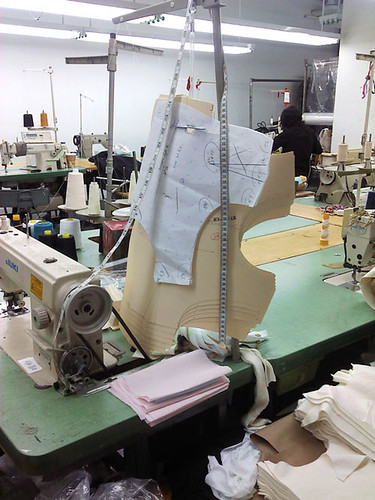
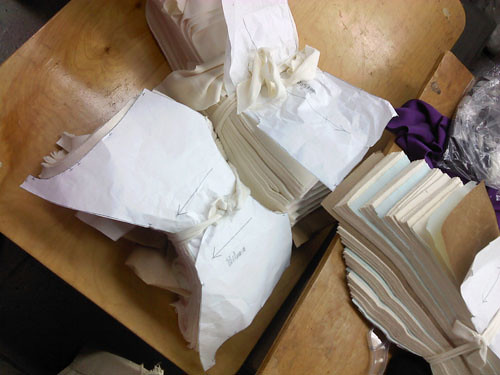
Ike Behar
Ike Behar is a brand of menswear sold in department stores like Neiman Marcus, Saks, and Bloomingdales. They specialize in high quality dress shirts, available in hundreds of colors and prints. Unlike some of the other lines we visited, they do not manufacture private label lines for the department stores, because they want to focus on building their own brand. Their business has mostly been unaffected by the recession, because shoppers are still willing to pay for quality shirts.
Our guide told us that the menswear industry is much more sane and predicable than the hectic women’s clothing industry. Men’s styles only have slight changes from season to season, so the designers don’t have to reinvent their collections so often. Hmmm, maybe I should switch to menswear!
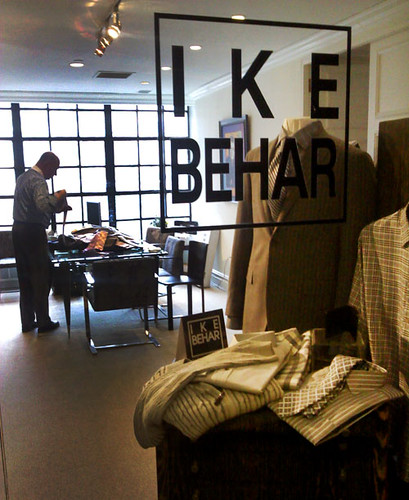
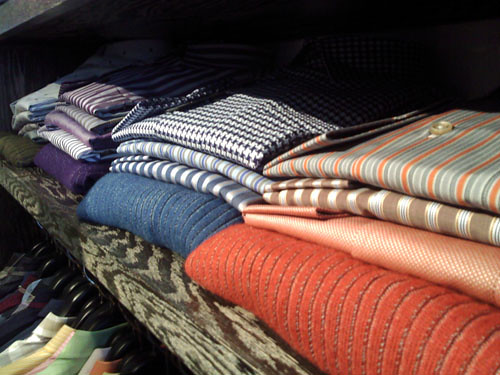
R & C Apparel
http://www.randcapparel.com/
This was my other favorite place to visit. R & C Apparel is well known for their pleating and embellishment capabilities. The owner of the business took us through his entire shop, and happily described all of the things that his machines could make. We saw the manufacturing process of bias tape, belt loops, pleats, spaghetti straps, and many more embellishments. The factory was crowded with some of the craziest looking sewing machines. They sell machines to other factories and can also refurbish a machine to do a specific task. Designers can bring them samples of a technique that they like, and a machine will be custom made for them.
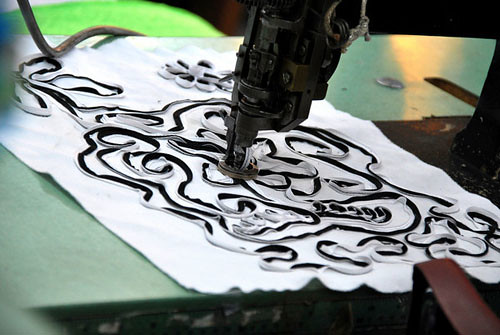
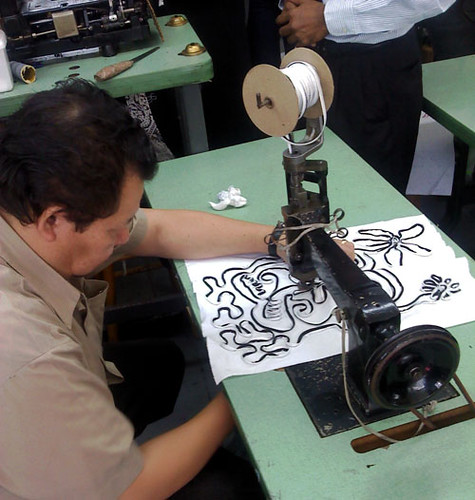
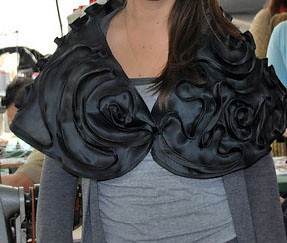
Machine that puts ribbon embellishments on fabric. Two pictures on the right were taken by Kay Tindell. The far right picture is a shrug made with the embellishment.
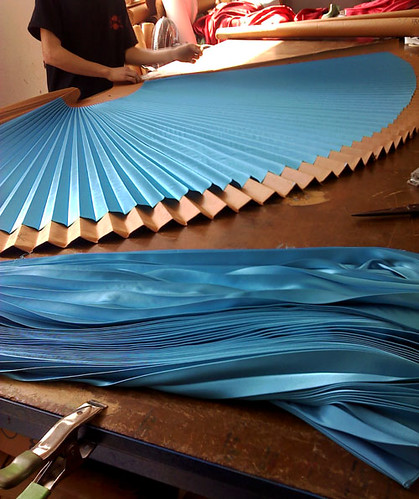
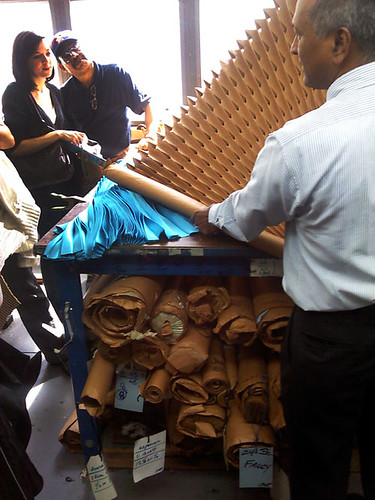
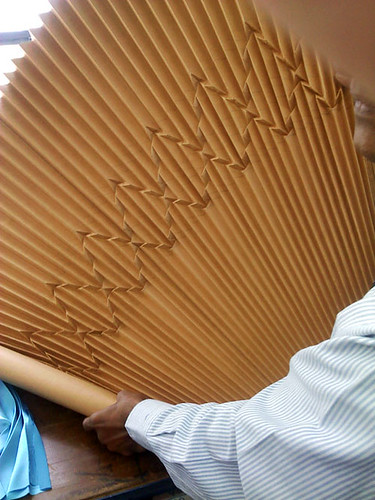
R & C can also pleat many different designs into the fabric of your choosing. The fabric needs to have at least 10% polyester content for the pleats to hold up through washing. The fabric is placed between folded cardboard molds and then heated to around 400 degrees. With the right mold, you can make your own custom shapes and letters out of pleats.
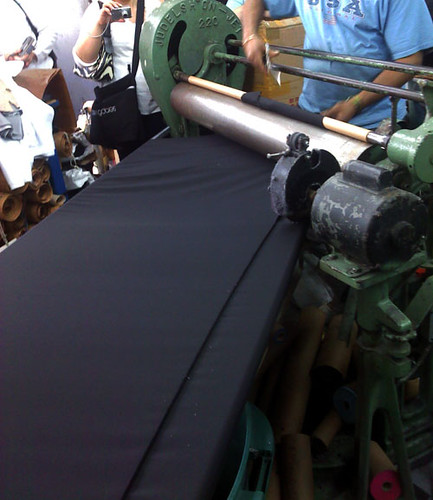

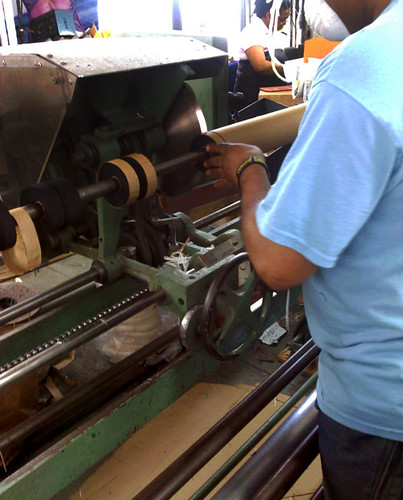
This is the process of making bias tape. The fabric is tightly rolled into a tube at a 45 degree angle, and then sliced into small rolls.
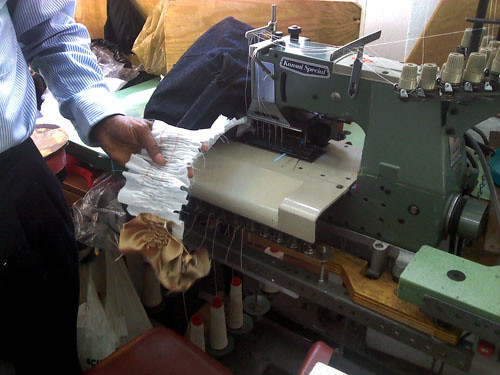
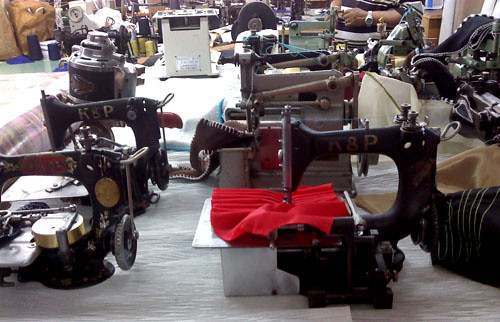

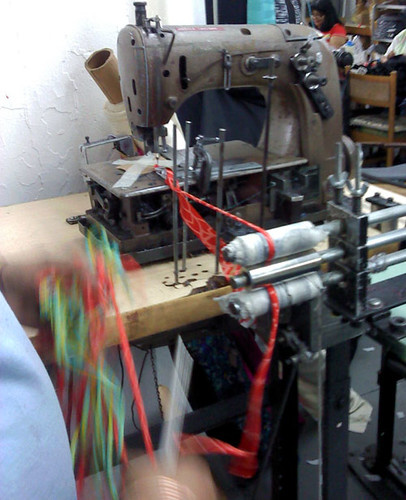
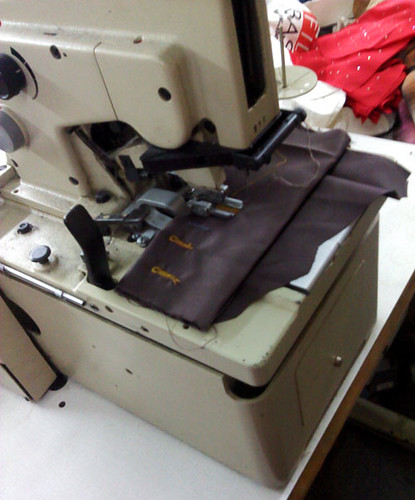
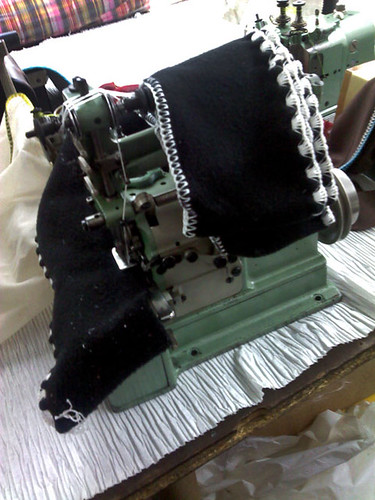

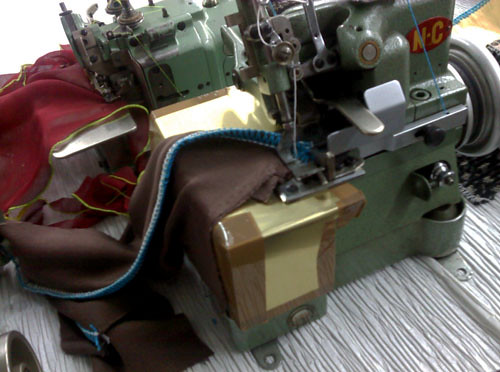
More special machines. I don’t know the specific names of all the machines, but here are my guesses:
(From left to right, up to down) elastic shirring machine, ruffler, belt loop machine, spaghetti strap machine, buttonholer, and three blanket stitch/hemming machines. The spaghetti strap machine and belt loop machine are made by adding special folders and other attachments to regular machines.
Below are some close-ups of the spaghetti strap and ruffling machines, photographed by Kay Tindell. (Again, I’m not sure the exact names.)
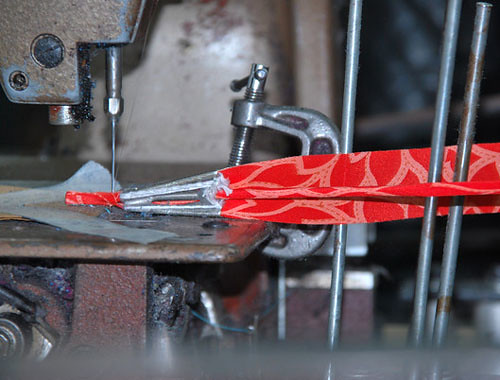
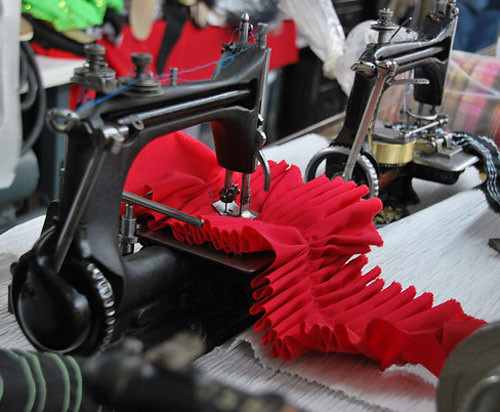

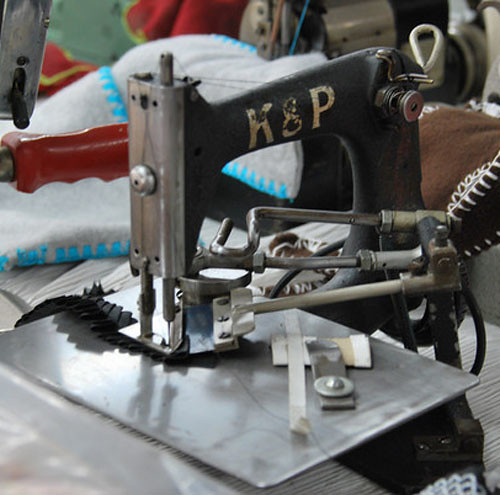
J Brand
J Brand is a fast-growing line of designer jeans. The line was launched in 2005, and it is sold in high-end stores like Bloomingdales, Barney’s, and Bergdorf Goodman. We visited the line’s showroom and were taught about the process of getting the jeans into boutiques, just as we did with the Tracy Reese line.
Some interesting info: a team of 40 designers brief sales reps on facts and features of the current season’s styles. The sales reps will then sell the line to department store and boutique buyers. The buyers re-order the basic styles (staples) every season, along with their choice of the current trendy styles. The sales reps also travel to different stores to make sure that the jeans are being displayed and marketed the right way. A P.R. firm is used to get press and to get celebrities to wear the jeans. The owner of the business previously worked at his family’s denim line, located in New York. We visited J. brand’s east coast showroom, but the main office and showroom is located in Los Angeles.
When we visited them last year, they were in the middle of getting their new jean/legging hybrid styles out to stores. Now, the “jegging” trend is running its course and you can find low-end styles in stores like Target. I’m a fan of tight and stretchy denim, but whoever coined the term “jegging” should be shot. I hate going to Target and finding an awesome pair of black stretch jeans, then realizing that the pockets are fake and the fabric is super thin! This trend better end soon. (J. Brand’s “jeggings” actually looked pretty good. But the discount stores have ruined the concept!)
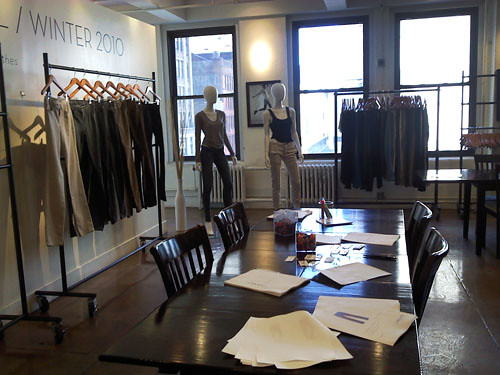
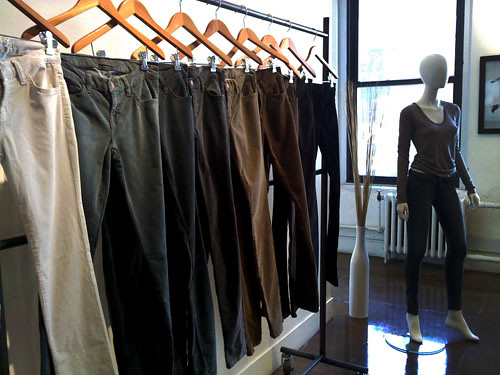
Wendy Reed
Wendy Reed is another clothing line sold in high-end department stores. The main designer got her start making one-of-a-kind pieces, and decided to mass produce her designs and sell them wholesale. One of my classmates from ARC got an internship at Wendy Reed several years ago, and was hired for a part time job last summer. She gave us a tour and an overview of what the company does. It was cool seeing somebody from my school working in the New York fashion industry. At the time we saw her, she was working 3 days a week and taking 7 classes at FIT (Fashion Institute of Technology). I remember her as one of the hardest-working students at the ARC fashion program, and I’m glad that her work is paying off!
I don’t have any plans to move to New York, but I had a blast during my trip and I hope to go back there soon!

This series is very nice, I didn't read all the way through them (but plan to) but I would encourage you to continue posting in the absence of comments. It takes awhile, I don't know why you haven't gotten many.
ReplyDeleteWhat you've written is interesting (for me) because after so many years in the business, we forget what people don't know or find interesting. And it matters for me, call it source material. I hope I don't leave the impression I'll be copying you by any means (I've already written about a lot of this), I'm more inclined to mention it on my site. I know that several of your machine photos and commentary will be interesting to a lot of people I know.
Don't be discouraged and keep up the good work.